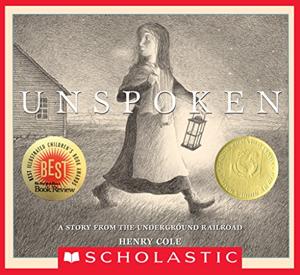
Want to learn the ideas in Unspoken better than ever? Read the world’s #1 book summary of Unspoken by Henry Cole here.
Read a brief 1-Page Summary or watch video summaries curated by our expert team. Note: this book guide is not affiliated with or endorsed by the publisher or author, and we always encourage you to purchase and read the full book.
Video Summaries of Unspoken
We’ve scoured the Internet for the very best videos on Unspoken, from high-quality videos summaries to interviews or commentary by Henry Cole.
1-Page Summary of Unspoken
Overview
When we look at the history of civil rights in the United States, it’s easy to see how much progress has been made. But when you consider that every step forward for African Americans was met with resistance from white people, you can better understand why there is still so much work left to do. Whether it be Jim Crow laws after emancipation or closing public schools after Brown v. Board of Education (which outlawed segregation), the War on Drugs after Civil and Voting Rights Acts were passed (which disproportionately affected black communities) or backlash against President Obama’s election, white rage has been a constant presence throughout U.S. history—and even today—in response to any advancement by minorities.
Reconstructing Reconstruction
Slavery has always been a controversial issue in the United States. In fact, even when it was the backbone of America’s economy, slavery was criticized by some people. Thomas Jefferson believed that slavery was immoral and an affront to God, while Abraham Lincoln went further by stating that he believed the Civil War occurred because of divine punishment for slavery. This idea wasn’t sustainable at the time, but America is still dealing with its effects today.
When Andrew Johnson took the office of president, it became clear that the Civil War was about slavery. The Confederacy spoke about self-preservation, but they really meant keeping slavery alive and well.
During the Civil War, African-Americans fought in the Union Army. Many people thought that they should be granted citizenship rights since they were fighting for their country. However, even after this war was won and slavery abolished, it seemed as though African-Americans weren’t treated equally to white Americans because of laws like “Black Codes” which limited their rights.
Johnson ignored what was happening to black bodies in the South, where more and more states put Black Codes into effect. These laws kept African-Americans in bondage by requiring them to be beholden to landowners. The Supreme Court ruled that states were the arbiters of their own rights, which meant slavery flourished under another name.
Derailing the Great Migration
During World War I, the United States was seen as a world leader in democracy, but it wasn’t resonating with everyone.
A white plantation owner named Hampton Smith in Georgia would force black prisoners to work off their debt on his plantation. He had a clever system that allowed him to do this for years, but eventually one prisoner named Sidney Johnson shot him twice after witnessing the cruelty of the slavery system. This was an example of white rage against black people who were treated unfairly based on racism and elitism.
Although America was built on migration, whites were not concerned about the destruction of blacks. Factories in the North began to recruit Southern blacks for their labor force. This caused Dixiecrats to worry that they would lose a major source of labor. As a result, they waged an ideological war against black people by using every legal weapon at their disposal. The situation got worse when major media outlets such as The Chicago Defender, a black newspaper, were banned in order to undermine them.
Although the migration of black people from the southern part of America to northern cities couldn’t be stopped, they faced discrimination in their new homes. White people were worried about being robbed or attacked by blacks who had moved into their neighborhoods.
One example of a person who overcame poverty is Dr. Ossian Sweet, from the Deep South. He was born into an impoverished family that moved to Detroit and became successful in his own right as a highly educated man with a great job and wife and children. However, he felt like he deserved more than just living in the poorest area of Detroit, known as Black Bottom. After moving into a white neighborhood when it became available for sale, angry people came by to protest him being there because they didn’t want blacks living near them after all this time since slavery ended. When rocks started flying at his house along with gunfire coming from inside the house where Sweet lived with his friends, police arrested everyone involved except for one person who died during the incident while others were wounded during the ordeal on both sides (police vs protesters). The police claimed their story about what happened first (rocks vs gunshots) was true even though it wasn’t based on evidence found at the scene or statements given by those involved; instead they lied about it so that they could arrest everyone involved without having to face any repercussions later on down the road due to racism still being prevalent throughout society even today despite laws against such behavior/actions which have been passed over many decades ago now but are not always followed through upon within some segments of our country’s population nonetheless still unfortunately existing regardless due to lack of enforcement etc…






